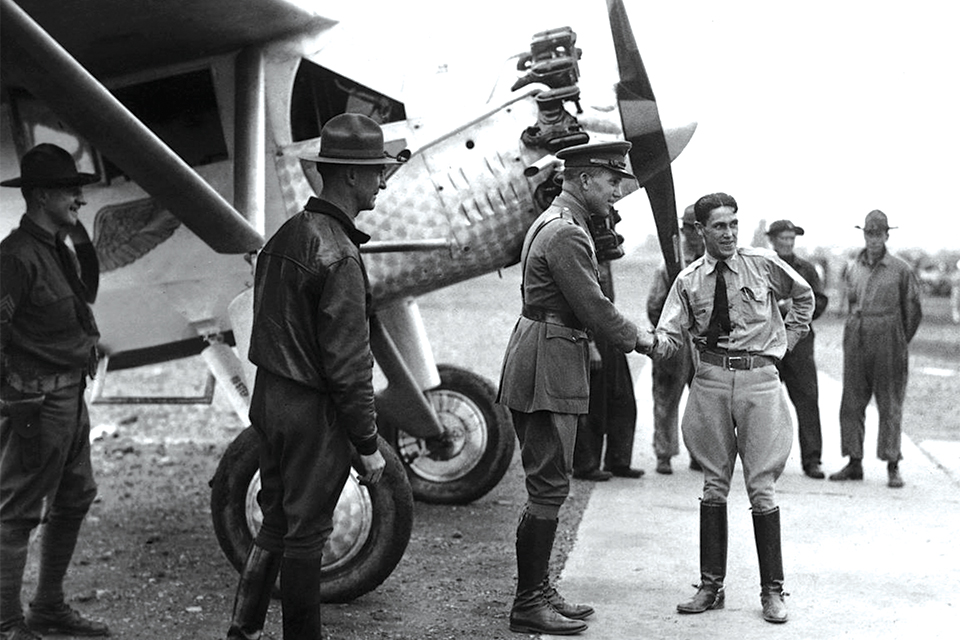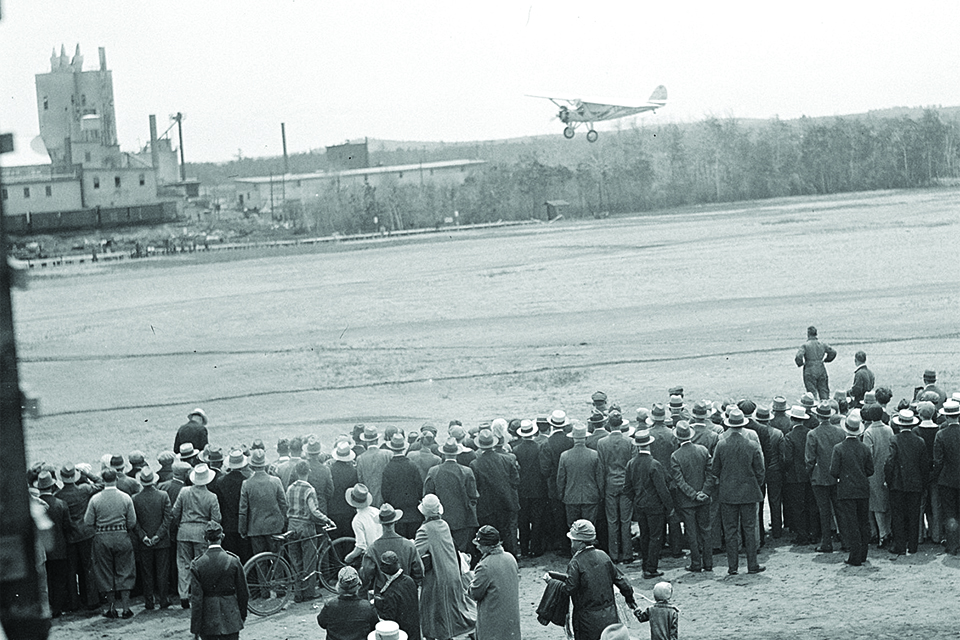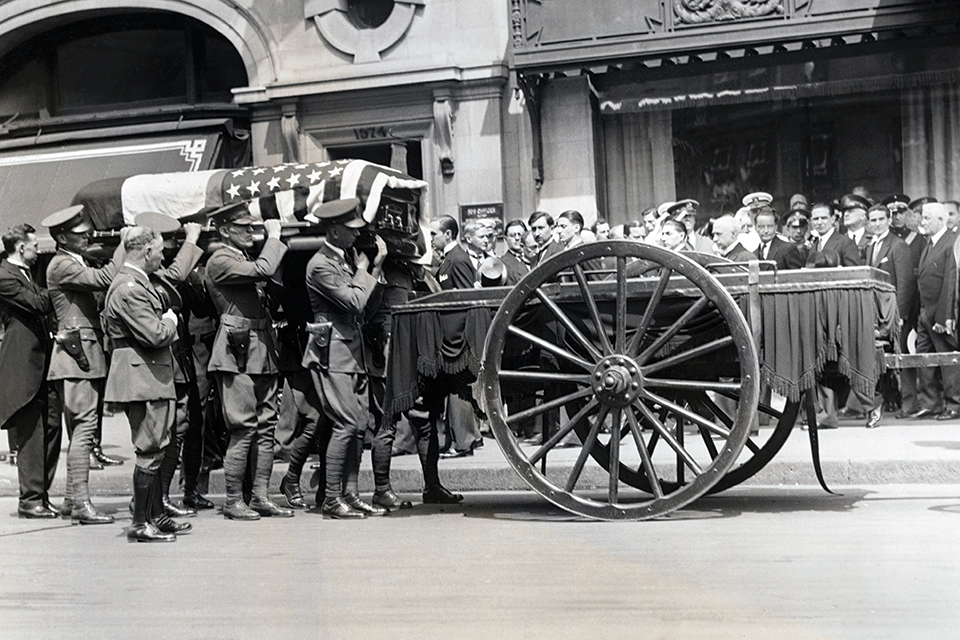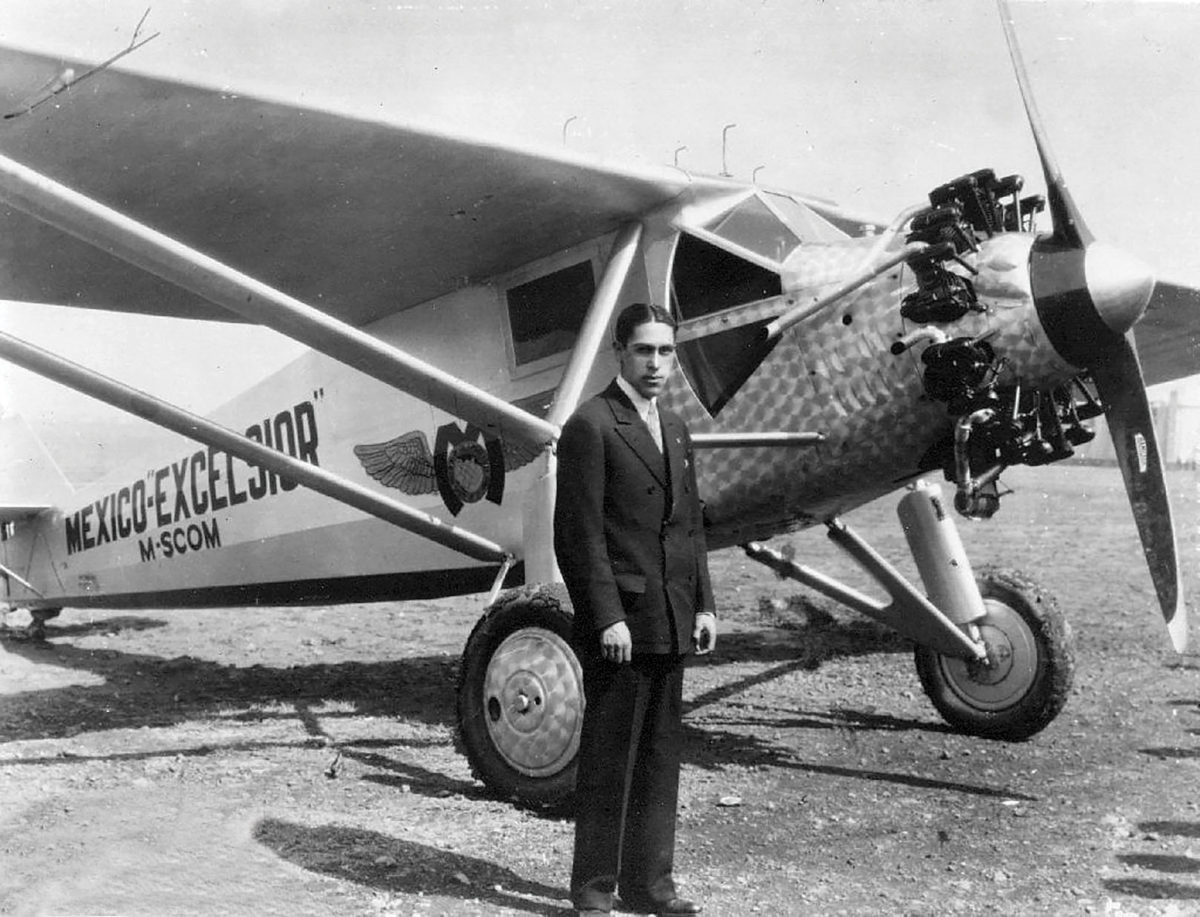Two months after completing his May 1927 New York to Paris solo flight, Charles Lindbergh took off on a goodwill tour of America, flying his Spirit of St. Louis to all 48 states. Then he turned south to tour 16 Latin American countries between December 1927 and February 1928. His first stop was Mexico City, where he met the U.S. ambassador and his daughters, one of whom, Anne Morrow, would become his wife in 1929.
South of the border, a young military pilot, Emilio Carranza, keenly followed Lindbergh’s exploits while setting a few aviation records of his own. Carranza was born in 1905 into a notable political and aviation-minded family. His father was an attaché at the Mexican consulate in New York City, his great uncle was a former president of Mexico and his cousin was director of the Mexican School of Military Aviation. As a boy, Carranza would visit the airport with his cousin and became enamored of aviation. He graduated from the Mexican military academy in 1924 and participated in the last battles of the Yaqui Wars.
In 1927 Carranza made the first flight between Mexico City and Juarez, a distance of about 1,000 miles. After reaching Juarez he met Lindbergh, who had landed just across the border in El Paso on the same day. In 1928 Carranza made the third longest nonstop solo flight up to that time, covering 1,575 miles from San Diego to Mexico City.

It was therefore not surprising that Carranza was selected to represent Mexico by making a goodwill flight to Washington, D.C., in response to Lindbergh’s tour of Latin America. His airplane, named Excelsior after a Mexican newspaper that promoted the flight, was a Ryan B-1 Brougham. Designed by Donald Hall, who was also responsible for Spirit of St. Louis, it was very similar to Lindbergh’s airplane. (In 1957 three Broughams were modified to stand in for Spirit in the biographical film starring Jimmy Stewart.)
Carranza had planned a nonstop flight to Washington, but didn’t quite make it after being forced to land in North Carolina due to fog. On June 12, 1928, he arrived at Washington’s Bolling Field, where he was greeted by the Mexican ambassador, American officials and a throng of spectators. The next day he lunched with President Calvin Coolidge.
Flying on to New York City, Carranza landed at Long Island’s Roosevelt Field, where Lindbergh had departed for Paris the previous year. New York Mayor Jimmy Walker presented Carranza with a key to the city and hosted the aviator at several banquets, with celebrity guests including Charlie Chaplin and Jack Dempsey. Newspaper reporters soon dubbed the 22-year-old pilot the “Mexican Lindbergh.”
Carranza flew up the Hudson River to the U.S. Military Academy at West Point, where he reviewed the cadets, and then to Lowell, Mass., to open a new airfield. Returning to New York City, he endured more luncheons, dinners and dances.

Carranza planned to complete the longest nonstop solo flight in the Americas on his return to Mexico City, but summer thunderstorms repeatedly postponed his departure. Anxious to fly after a month in the U.S., Carranza suddenly decided to leave on July 12 after receiving a relatively favorable weather report while dining at the Waldorf Astoria Hotel: “Partly cloudy to cloudy sky New York to New Orleans with local thunderstorms.” Although it was not a terribly ominous forecast, experienced American pilots counseled him to wait for another day. He chose to ignore their advice and took off about 7 p.m., during a break in the bad weather and with darkness falling.
Tragically, Carranza didn’t have the luck of Lindy. He crashed in southern New Jersey’s Pine Barrens about 85 miles into the flight amid a thunderstorm. The cause of the crash could not be determined, although some presumed lightning struck the airplane while others believed Carranza was flying low, looking for a spot to land, when his plane hit the trees. According to the New York Times, “Both wings had been shorn from the fuselage and fragments had fallen for a quarter of a mile….” The Times also reported that an aircraft had been heard flying over the area around 8 p.m.
The wreckage and dead pilot were discovered the next morning by a family picking berries. Carranza’s body was found some distance from Excelsior, which many speculated meant that he was thrown from the airplane. His body was escorted by U.S. Army officers to New York City and then returned to Mexico with full military honors. Carranza was buried in the Rotunda of Illustrious Persons at Mexico City’s Dolores Cemetery, a spot reserved for national heroes. A pine tree from the crash site was planted by the aviator’s grave.

In 1931 a monument funded by Mexican schoolchildren was erected at the Pine Barrens crash site. The 12-foot granite obelisk was built from stones quarried in Mexico. Etched on it, in English and Spanish, is this inscription: “Messenger of Peace. The people of Mexico hope that your high ideals will be realized. Homage of the children of Mexico to the aviator captain Emilio Carranza who died tragically on July 13, 1928 in his good will flight.” (The date of his death on the monument is incorrect since Carranza departed around 7 p.m. on July 12 and only flew for about an hour before crashing.)
Today the monument stands in a clearing among the pine trees, with Mexican yucca plants around the base. Each July, on the Saturday nearest the anniversary of his crash, the Mount Holly American Legion Post 11, with staff from the Mexican consulates in New York City and Philadelphia, honors Carranza with a wreath-laying ceremony at the monument, which is about 45 miles northwest of Atlantic City and 35 miles east of Philadelphia (for directions, search “Carranza Memorial” in Google Maps).
This article appeared in the November 2021 issue of Aviation History. Don’t miss an issue, subscribe!





